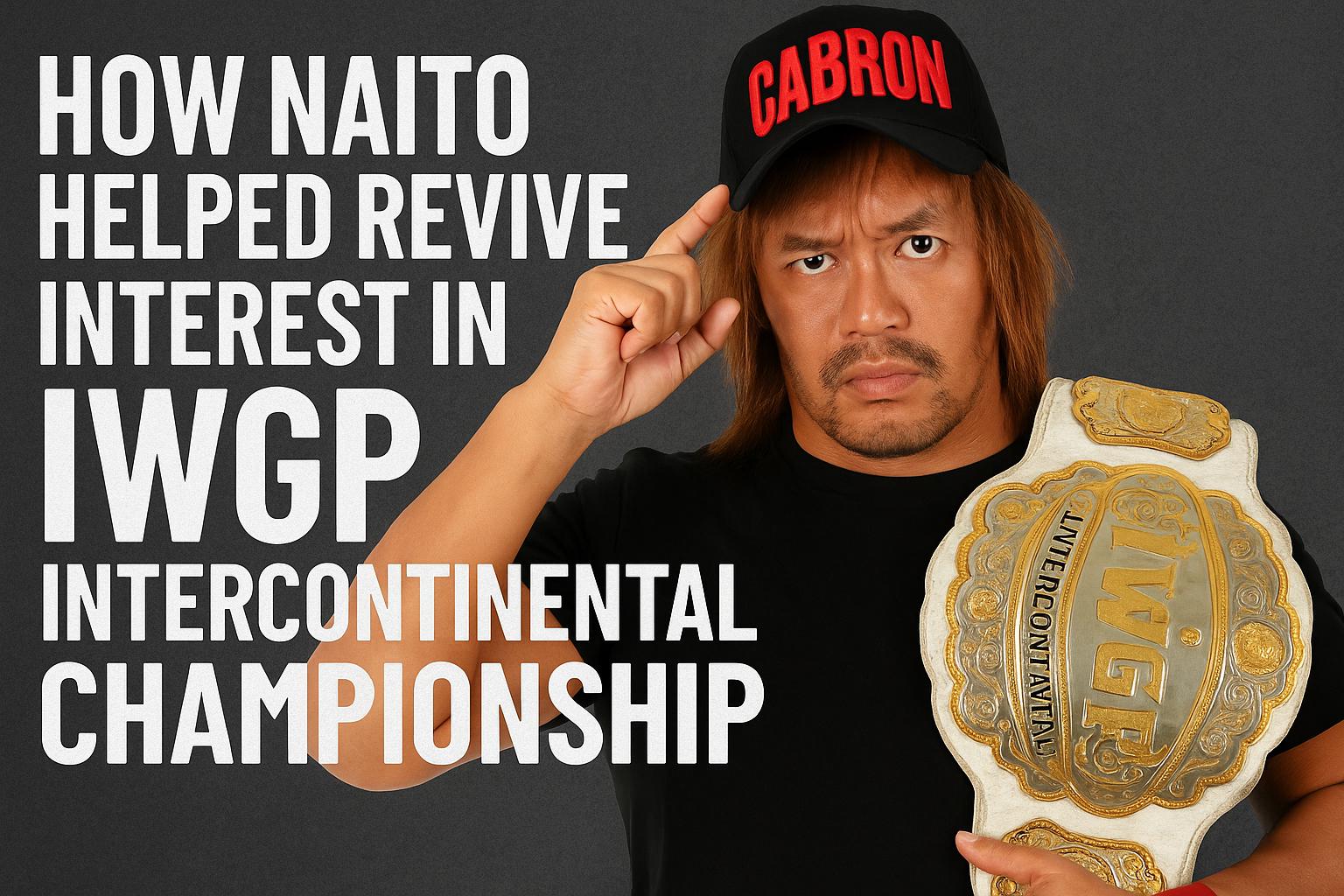Background on the IWGP Intercontinental Championship
The IWGP Intercontinental Championship was brought into existence by New Japan Pro-Wrestling (NJPW) in 2011. As a brainchild designed to complement the highly esteemed IWGP Heavyweight Championship, this title sought to create a layer of prestige in the wrestling hierarchy. Initially perceived as a secondary title, it quickly garnered attention and respect within the wrestling community. This surge in prestige is attributed to the efforts of iconic wrestlers such as Shinsuke Nakamura, whose tenure as champion propelled the title’s standing to a noteworthy level. Despite its initial momentum, the IWGP Intercontinental Championship experienced periods of fluctuating prominence. Various elements contributed to these fluctuations, including the shifting focus towards other NJPW titles and developing storylines that at times overshadowed this championship’s standing in the promotion’s overall narrative.
Naito’s Role in the Revival
A significant turning point in the storyline of the IWGP Intercontinental Championship came with the involvement of Tetsuya Naito, a prominent figure within NJPW. Naito’s influence was pivotal in reviving interest in the championship. Known for his unique approach and charismatic persona, Naito brought a fresh perspective to the title, intertwining his enigmatic character with the championship’s narrative in a manner that captivated audiences.
The Infamous Belt Destruction
Tetsuya Naito’s tenure as the IWGP Intercontinental Champion is perhaps most remembered for his notorious treatment of the championship belt. This period was marked by deliberate acts of scuffing and damaging the belt, showcasing what appeared to be disdain for the accolade. These provocative actions served a dual purpose. On one hand, they raised eyebrows and garnered significant attention from wrestling fans and critics alike. On the other hand, they succeeded in shining a spotlight on the championship itself, inviting a dialogue about the perceived value and meaning of holding such a title. Fans became deeply invested in the unfolding narrative, speculating whether Naito’s cavalier attitude would result in consequences or continued evolution in the storyline.
Naito’s Storyline Integration
Naito’s integration of his persona into the championship storyline played a crucial role in elevating the IWGP Intercontinental Championship to a central position within NJPW’s broader narrative framework. His ongoing quest, referred to as the “Destino,” sought to challenge and redefine the traditional hierarchy within NJPW. This quest involved Naito aspiring to secure both the IWGP Intercontinental and Heavyweight Championships simultaneously. His storyline was not just about personal achievement but also about redefining the power structures within the organization, creating a compelling arc that fans found easy to rally behind.
Key Matches and Rivalries
During his time as champion, Naito engaged in several high-stakes matches and formed celebrated rivalries that further highlighted the significance of the IWGP Intercontinental Championship. These encounters, featuring formidable opponents, were crucial in showcasing the championship’s importance within the wrestling circuit. The quality and intensity of these matches drew significant attention from fans, enhancing the title’s appeal and visibility within the wrestling community. As a result, the championship gained intrigue not only for what the title represented within the ring but also for the dramatic narratives that unfolded outside of it.
Impact on NJPW and Fan Engagement
The revitalization of the IWGP Intercontinental Championship, significantly facilitated by Naito’s involvement, had a profound impact on NJPW as a whole. It played a crucial role in extending NJPW’s reach to a broader audience. Through inventive storytelling and Naito’s captivating presence, fan engagement experienced a notable surge. Notably, the effects of this engagement were felt beyond Japanese borders, as international audiences became increasingly attracted to the evolving narratives surrounding the title. Naito’s approach, embodying both innovation and charisma, not only appealed to existing fans but also succeeded in drawing new followers into the NJPW fold, thereby expanding the promotion’s global footprint.
Broader Implications on Professional Wrestling
Tetsuya Naito’s tenure with the IWGP Intercontinental Championship set new standards in professional wrestling for storytelling and character development. His successful blend of personality and narrative demonstrated the potential power of story-driven wrestling promotions. Observers within the wrestling industry took note, inspiring other wrestling promotions to experiment with similar strategies to either maintain or boost the relevance of their titles. This focus on narrative and character development has, in some cases, introduced fresh dimensions to the professional wrestling landscape, highlighting the essential role of storytelling in cultivating a championship’s prestige and fostering fan investment.
For those who wish to delve deeper into the various championships and narrative arcs within NJPW, visiting NJPW’s official website can provide a comprehensive resource. The site offers insights into ongoing events, profiles of wrestlers, and updates on current storylines.
Conclusion
In conclusion, Tetsuya Naito’s influence significantly impacted the IWGP Intercontinental Championship, marking a period of renewed interest and engagement. His tenure was striking for the innovative blend of narrative and character that it presented, effectively rekindling the championship’s status within NJPW. This period serves as a testament to the importance of storytelling in professional wrestling, exemplifying how a well-crafted narrative can sustain and invigorate a championship’s legacy. Through his actions and unique persona, Naito not only left a lasting impact within NJPW but also demonstrated to the wider wrestling community the vital role that narrative plays in the evolution of championships, ensuring enduring fan engagement across both national and international arenas.
This article was last updated on: September 14, 2025
